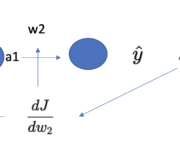Deep Learning Archive
Feature Scaling and Data Normalization for Deep Learning
On October 5, 2021 In Deep Learning, Machine Learning, None
Before training a neural network, there are several things we should do to prepare our data for learning. Normalizing the data by performing some kind of feature scaling is a step that can dramatically boost the performance of your neural network. In this post, we look at the most common methods for normalizing data
An Introduction to Neural Network Loss Functions
On September 28, 2021 In Deep Learning, Machine Learning
This post introduces the most common loss functions used in deep learning. The loss function in a neural network quantifies the difference between the expected outcome and the outcome produced by the machine learning model. From the loss function, we can derive the gradients which are used to update the weights. The average over
Understanding Basic Neural Network Layers and Architecture
On September 21, 2021 In Deep Learning, Machine Learning
This post will introduce the basic architecture of a neural network and explain how input layers, hidden layers, and output layers work. We will discuss common considerations when architecting deep neural networks, such as the number of hidden layers, the number of units in a layer, and which activation functions to use. In our
Understanding Backpropagation With Gradient Descent
On September 13, 2021 In Deep Learning, Machine Learning
In this post, we develop a thorough understanding of the backpropagation algorithm and how it helps a neural network learn new information. After a conceptual overview of what backpropagation aims to achieve, we go through a brief recap of the relevant concepts from calculus. Next, we perform a step-by-step walkthrough of backpropagation using an
How do Neural Networks Learn
On September 3, 2021 In Deep Learning, Machine Learning
In this post, we develop an understanding of how neural networks learn new information. Neural networks learn by propagating information through one or more layers of neurons. Each neuron processes information using a non-linear activation function. Outputs are gradually nudged towards the expected outcome by combining input information with a set of weights that




